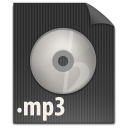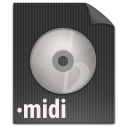Puppet - Ib - With More Accompaniment
- Author
- NoOneLaysHere
- Type
- Grand Illusions 30
- Created
- 02/06/2017 04:33
- Cloned from
- Puppet - Ib
- BPM
- 90
- Length
- 264
Transcribed onto a music-box, and is slightly modified.
This has the L.H. play its part and one octave above itself [L.H.->Left Hand, R.H.->Right Hand. As used for a pianist.]. This allows the L.H. to play E♭/D♯ when it otherwise cannot. The middle section thus doesn't have moments without notes being played. For the rest, on multiple occasions it overlaps the R.H., in addition to there being more notes played at once, so the melody is a bit drowned. At a few times, some notes have been removed because there'd be more than six notes playing at once, and this program automatically deletes notes until there are only 6 notes per column (from what I see). The notes deleted are the highest pitch notes of the lower L.H., which happen to be the notes closest to C5.
This state was achieved when in the processed of transferring the L.H. an octave up (like this one, but without the lower, older L.H.). I decided it may have been worth it to upload this variation.
Hole punch paper strips Export
Yay! It looks like this melody can be played offline on a 30 note paper strip music box!
All you need to do is:
- Get a 30 note DIY Music Box Kit from our online store page if you don't have one
- Export the melody to PDF with paper strips, print it out and cut with scissors. Make sure to use the right paper size and set you printer scale to 100%, otherwise the size won't match. It's better when paper strips are thick, so if you are going to use thin office paper, we recommend you to glue two or three layers together. Another option is to laminate paper strips with a transparent duct tape
- Punch holes with a tool from the music box kit
- Enjoy your favorite melody playing on a real music box!
Grand Illusions 30 music boxes More
Similar melodies
Transcribed onto a music-box, and is slightly modified. This has the L.H. is transposed one octave above itself (i.e. B3 turns into B4, C4 into C5, etc.) [L.H.->Left Hand, R.H.->Right Hand. As used for a pianist.]. This allows the L.H. to play E♭/D♯ when it otherwise cannot. The middle section thus doesn't have moments without notes being played. For the rest, on multiple occasions it overlaps the R.H., so the melody is a bit drowned.










Comments Subscribe